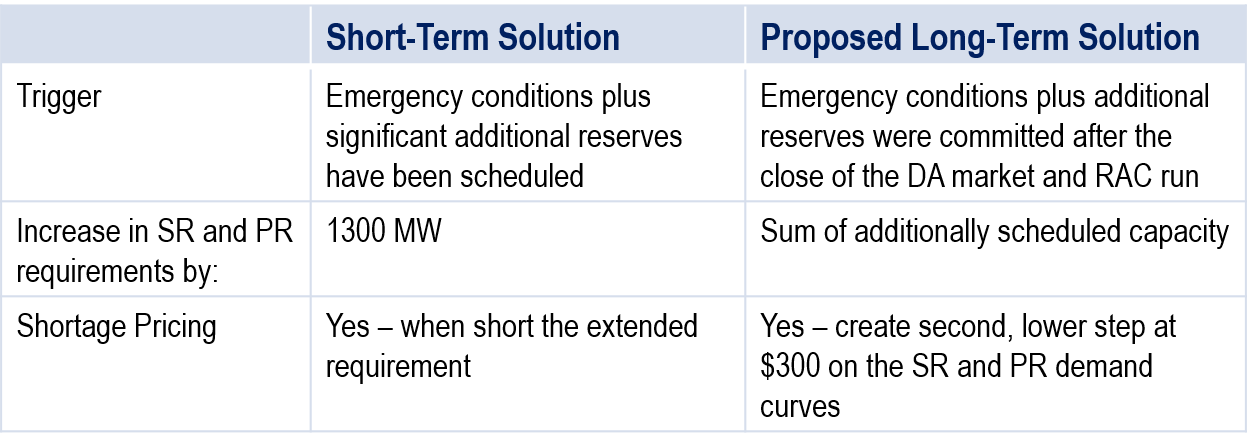The Markets and Reliability Committee approved new rules allowing PJM to increase synchronized and primary reserve requirements in emergencies, an effort to reduce uplift and ensure energy prices better reflect operator actions.
A companion measure to limit interchange during emergency conditions fell just short of a two-thirds approval vote but PJM will recommend implementing the procedure anyway because it requires only manual changes, which are not subject to supermajority approval rules.
The reserve rules are a more flexible version of the short-term fix approved by stakeholders in May and incorporate a transition mechanism proposed by the PJM Industrial Customer Coalition.
The industrials’ proposal won 91% support in sector-weighted voting after a PJM proposal that lacked the transition fell short with only 46%.
Under the new rules, PJM can increase synchronized and primary reserve requirements under emergency conditions (Hot and Cold Weather alerts, Maximum Emergency Generation Alerts and escalating emergency conditions) when additional intraday resources are scheduled.
The volume added to reserves would be based on the quantity of additional MW committed, as opposed to the static 1,300-MW adder included in the short-term fix, which expired in September.
The transition proposal limits the impact to load pending Federal Energy Regulatory Commission approval of a new day-ahead scheduling reserve cost allocation and a second lower step on the demand curve.
PJM will implement the day-ahead unit commitment and the majority of the DASR requirement changes for winter 2015.
For the real-time changes, the proposal implements the Market Monitor’s proposal to only increase the primary reserve requirement until FERC approves the additional step on the synchronized and primary reserve demand curves. Once FERC approves the addition of the second step on the synchronized reserve and primary reserve demand curves, the PJM proposal to increase both the synchronized reserve and primary reserve requirements will become effective.
Interchange Limits
PJM’s proposal to set limits on interchange during emergency conditions won 66% support from the MRC, just short of two-thirds.
“There’s probably just one vote that needs to change” to win two-thirds support, said MRC Chairman Mike Kormos, who directed the Energy and Reserve Pricing & Interchange Volatility working group to “take one more stab” at consensus.
The working group is scheduled to meet Wednesday. PJM officials said they expect to bring the interchange volatility proposal to the November MRC meeting for reconsideration.
PJM officials said, however, that they intend to recommend operating under the new rules, which are intended to prevent markets and operations from being whipsawed by large swings in imports.
“We said we’d take unilateral action … if we couldn’t get consensus,” Kormos said.
The limit would be used when operators have made firm resource commitments and anticipated interchange schedules are sufficient to meet projected load for the hour.
Spot imports and hourly non-firm point-to-point transactions submitted after the cap is implemented would be blocked once net interchange reaches the limit. Schedules with firm or network-designated transmission service would not be curtailed.




